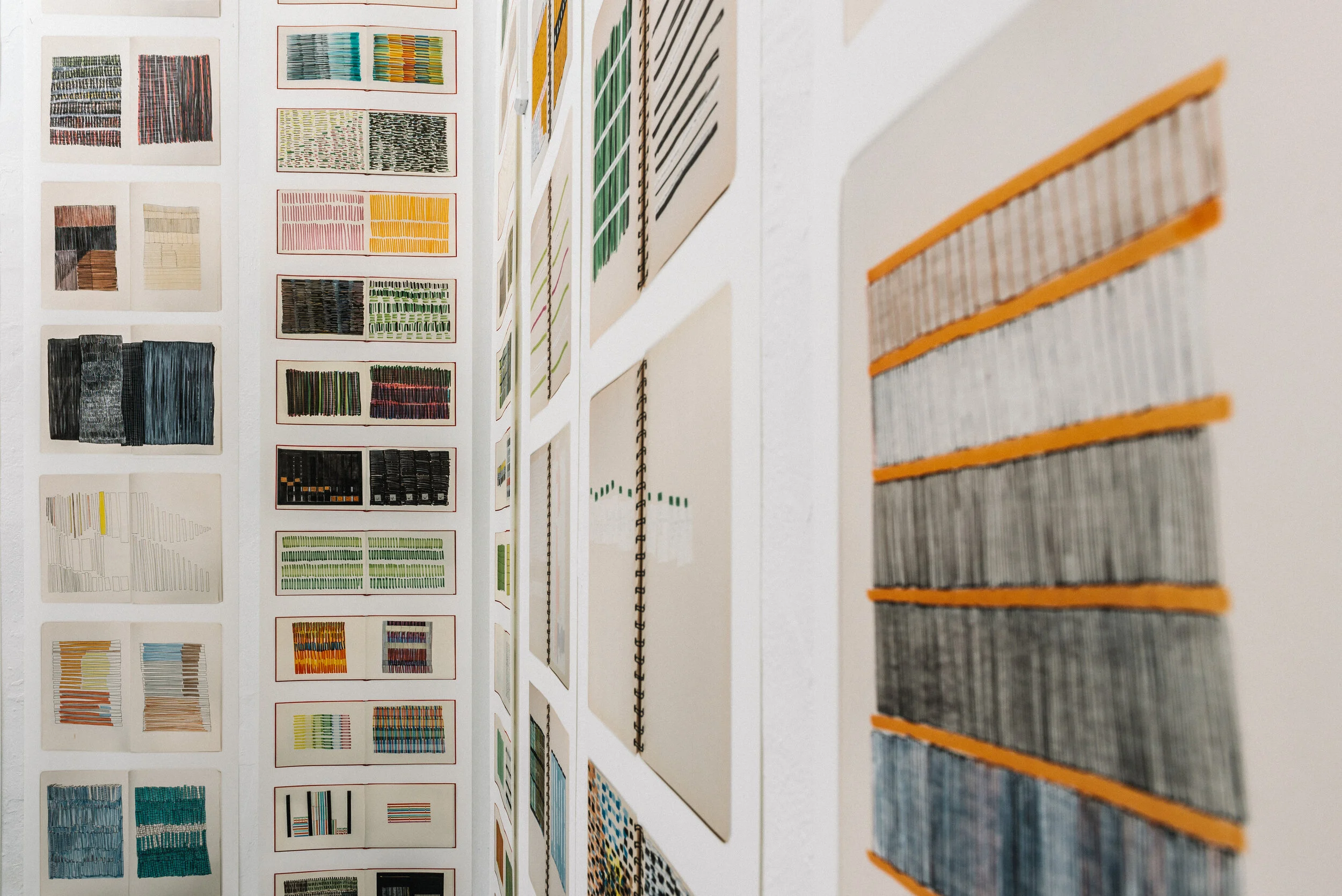The Central Library Exhibition. Artist House, Tel Aviv 2020 Curatorial guidance: Merav Shinn Ben-Alon
I spent a lot of time in the Central library of Tel Aviv University and found myself photographing its hallways. There was something about the lighting conditions, the special light coming through the windows, that affected me as a photographer and became love at first sight.
The second thing that captivated me was the journals and the abundance of books in different fields and languages. I noticed that in the library, it’s customary to rebind journals in canvas covers of various colors, with handwritten titles in calligraphic or basic scripts appearing on the spines in multiple languages, including Hebrew, Arabic, Latin, German, Russian, Yiddish, and Persian.
Another element that interested me was the cataloging system, which creates a kind of dialogue between the library and the reader. It’s a system of symbols—letters and numbers—that among other things determines what can be borrowed and for how long. I discovered that some books can only be borrowed for photocopying purposes, while others cannot be borrowed at all.
Detail of the walls in the exhibition “The Central Library” Artist house, Tel Aviv,2020
At the Central Library, I was exposed to a vast collection of books. This immense archive includes fascinating items such as:
Entire shelves of British parliamentary records, for example:
British Parliamentary Papers – Seasons 1942: Industrial Revolution, Child EmploymentDavar HaPo’elet – the first women’s monthly magazine in Israel, founded in 1934
Halakhot by the Rif (Rabbi Alfasi), published in Vilna, 1881
Di Goldene Keyt (“The Golden Chain” in Yiddish) – a journal published in Israel between 1948 and 1995 by the General Federation of Labor in Israel, with Avraham Sutzkever as its editor throughout its run
Zygon – a journal on religion and science, published continuously since 1966
On the one hand, I felt excitement from the idea that all these books were within reach. On the other hand, I realized they were not truly accessible to me. Even though I speak several languages, I couldn’t understand most of them. I didn’t have the time or the skills to read them. What remained was admiration from the outside—without opening them.
Full visual of all the art work at the Exhibition “the Central Library”. Artist House, Tel Aviv
During the photography process, I reflected on the moldy hallways with books that hadn’t been moved in years, coated in dust, and I wondered: what is the significance of these books if no one opens or uses them? After all, most people come to the library just to find a quiet corner to study. Has this entire setup become a kind of stage set?
While working on the exhibition, I took around 1,000 photographs of the shelves. I then built an archive, re-categorizing the photos into folders. I was intrigued by the repetitive grid aesthetic—the horizontal bookshelves with their vertical arrangement of books standing side by side: organized, sorted, cataloged.
My work as a multidisciplinary artist unfolds through a dialogue between three media: still photography, video, and painting. In a sketchbook where I collect ideas, I began to make drawings based on the library photographs. As I progressed, a rhythm began to emerge—one spread after another, one story after the next. This gave birth to a new body of work composed of dozens of drawings that make up the exhibition.
Detail from the photo prints
The process raised the question of how to present sketchbooks in a way that makes them accessible to the public, as an act of repair—a reopening of the closed, inaccessible book.
That’s how the idea was born: to create a “library” of open books on view. I returned to the medium that started the process—photography—and photographed the open spreads of the sketchbooks.
I edited the images into strips measuring 4 meters by 60 cm, aiming to use the full height of the exhibition space (3 meters by 3.3 meters). Hanging the strips vertically recreated the feeling of the library space, transforming the installation into an imagined library made up of open books.
Dalia gal Sverdlin


